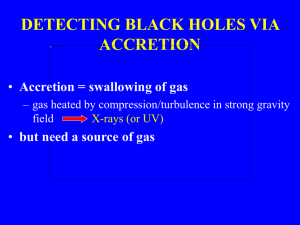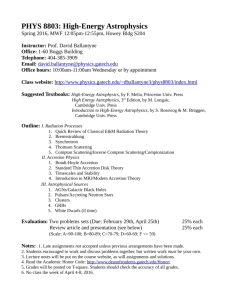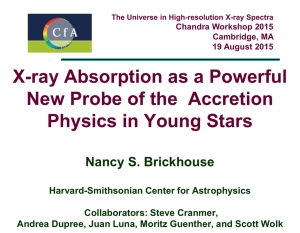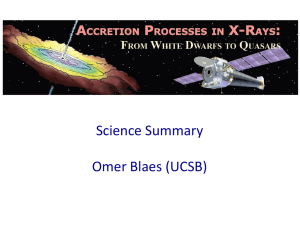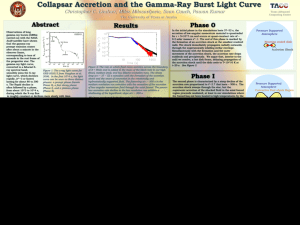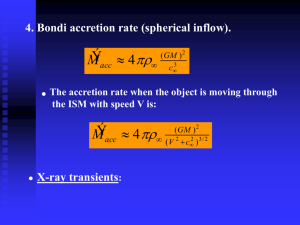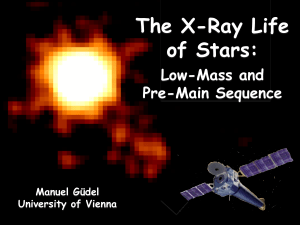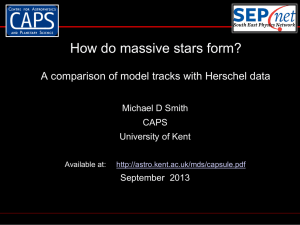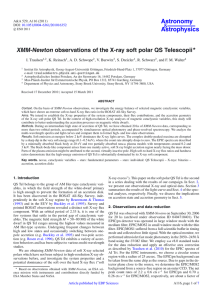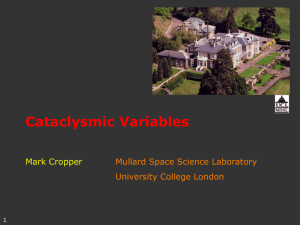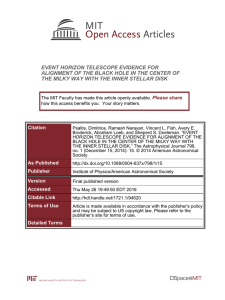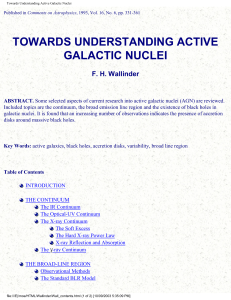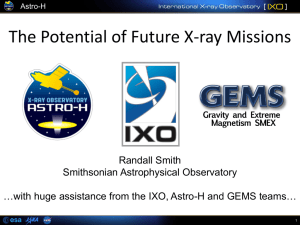Structure and Stability of X-Ray Irradiated Accretion Disk
advertisement
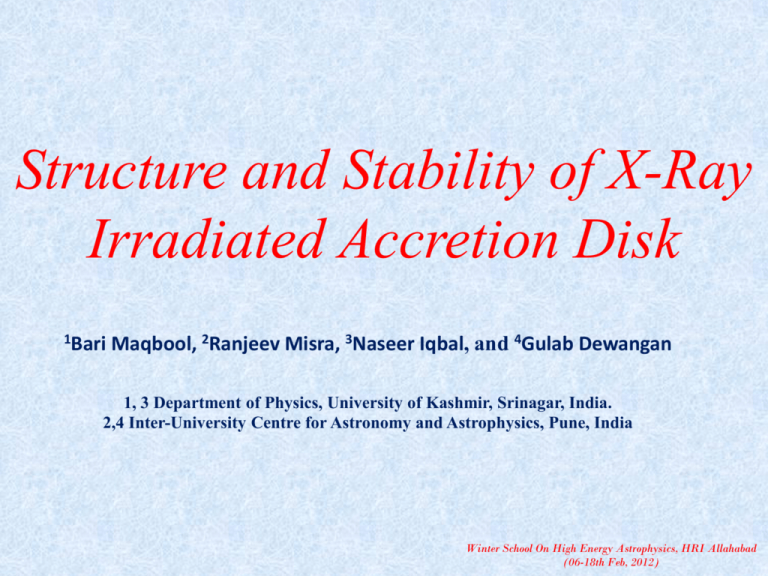
Structure and Stability of X-Ray Irradiated Accretion Disk 1Bari Maqbool, 2Ranjeev Misra, 3Naseer Iqbal, and 4Gulab Dewangan 1, 3 Department of Physics, University of Kashmir, Srinagar, India. 2,4 Inter-University Centre for Astronomy and Astrophysics, Pune, India Winter School On High Energy Astrophysics, HRI Allahabad (06-18th Feb, 2012) Abstract: We present here the mathematical approach in calculating the structural changes which take place in the outer regions of the accretion disk due to X-ray irradiation. It is shown here that an X-ray source powered by accretion, modifies the outer disc structure. Our calculations for the transition radius and Circularization Radius in case of various low mass X-ray binaries show that the X-ray irradiation becomes dominant after transition radius only in some binary systems. Structure of the X-ray Irradiated Accretion Disk: The general Radiative Transport equation is given by where F(r) is the flux of the heat generated internally by viscosity, 𝜏 represents optical depth, 𝜅 represents opacity, 𝛴 is the Surface Density. or, The above equation can be written as Now taking X-ray Irradiation into consideration, the above equation modifies to (Dubus et.al. 1999) Where Fir(r,h) measures the flux due to X-ray Irradiation and is given by (Vrtelik et.al 1989) Taking into account both the opacities, we can write as: Solving the above equation with other Standard Model Equations, we get a differential equation given as: where Solving equation (6) for fixed values of M, plots as shown , 𝛼, and 𝜂, We get the Circularization Radius and Transition Radius As is clear from the figure 2, that there is a sharp transition as, we go from the X-ray Irradiated region to the region where X-Ray Irradiation is not important. We have developed an expression for calculating this transition point, called as ‘Transition Radius, given by • Ll Viscous Time scale • It is the timescale on which matter diffuses through the disk under the effect of viscous torques and is given by: • For a Neutron star of mass 1.4 solar masses and uniform accretion rate of , the viscous timescale comes out to be 3.82 × 107 secs. Stability: For studying the stability of the such a disk, we plot a graph between the Accretion rate and Surface density, 𝛴 for a given value of radius and also considering That the inner accretion rate is same as the outer accretion rate. However , if the inner Accretion rate changes, the effect of the same on the outer Accretion rate on viscous timescale is depicted in the fig below. References: Frank, King, and Raine: Accretion Power in Astrophysics 3rd Edition,, Cambridge. Univ. Press . 2002 Dubus G.,et.al, Not .R Astron. Soc. 303, 139-147 (1999) Hoshi R. , Inoue H., Astronomical Society Of Japan 40, 421-434, (1988) N.I.Shakura, R.A.Sunyaev , Astronomy And Astrophysics, 24, 337-355,(1973) Vrtilek S.D., Raymond J.C, Garcia M.R., Verbunt F., Hasinger G., and Kurster M., Astronomy and Astrophysics, 235, 162-173
